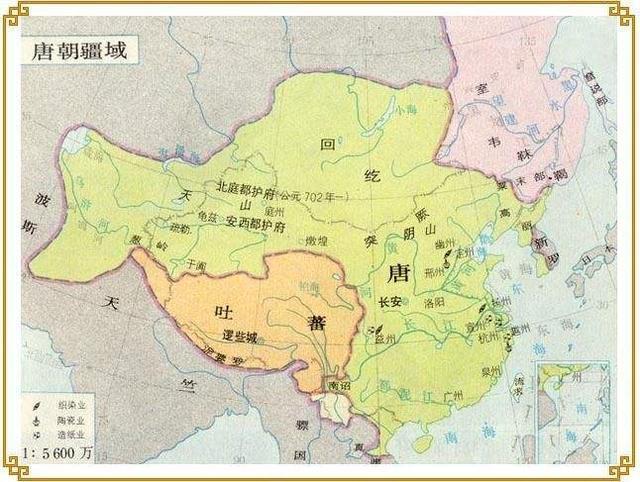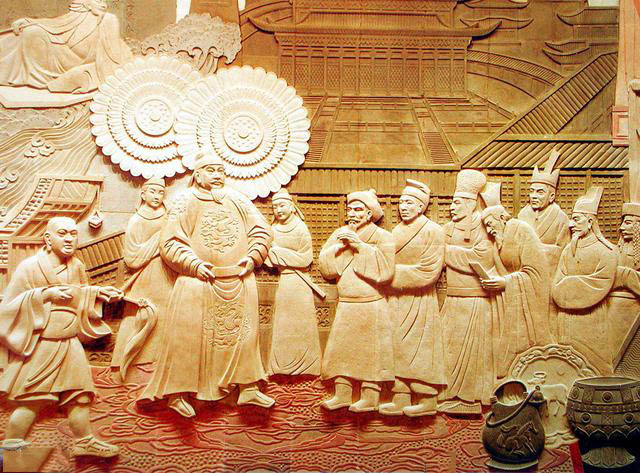Taizong Li Shimin (598 - 649), the second emperor of the Tang Dynasty, is a brilliant politician, strategist, militarist, and poet. He served under his father, Li Yuan, as a general at a young age and gained prestige among soldiers and people. Later, he was made Qin Wang (Lord of the Qin State) for his extraordinary contributions during the founding of the Tang Dynasty. In 626, Li Shimin staged a coup in Xuanwu Gate, killing the crown princess Li Jiancheng and other princes against him. He also forced his father, Li Yuan, the Gaozu Emperor, to abdicate. In the same year, Li Shimin established himself the Emperor Taizong and began his reign. He proved himself an outstanding emperor, creating a golden age of the Reign of Zhenguan. He was so successful that people forgave his crime of murdering brothers. On July 10, 649, Taizong passed away and was buried in Zhaoling Mausoleum.
Basics of Emperor Taizong’s Life
Name: Li Shimin
Title: Emperor Taizong of the Tang Dynasty, the Great Khan
Nationality: Han
Era: Tang Dynasty
Birthplace: Wugong County, Shaanxi
Birthday: Jan.23, 599
Date of Death: Jul.10, 649
Occupation: General, Politician, Emperor
Reign Title: Zhenguan
Major Accomplishments: founding the Tang Dynasty, expanding the Tang territory, creating a golden age of the Tang dynasty, and reforming the administration
Masterworks: Di Fan (the Code of An Emperor), Zhenguan Zhengyao (The Emperor's Government Strategy)
Early Years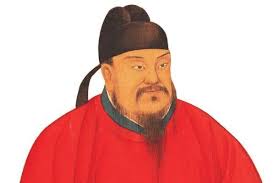
Li Shimin was born on Jan.23, 598, in Wugong county. As the second son of Li Yuan, a local governor of the Sui dynasty, Li Shimin had an elder brother, two younger brothers, and one older sister. At age 15, he married the later Empress Zhangsun, and two years later, Li Shimin joined the army and offered advice on how to rescue the Emperor Sui Yangdi, who was under the siege of the Turkic army. That was the first time he showed his military talent. In 617, Li Yuan was assigned to station Taiyuan, and Li Shimin followed his father.
Become Qin Wang (Lord of the Qin State)
During their stay in Taiyuan, a group army took control of the of Fenyang Palace. The emperor Sui Yangdi was dissatisfied with the incompetence of Li Yuan and his fellow generals in defending and decided to punish them. Suffering from nervous fears, Li Yuan took the advice from Li Shimin and his advisers to go against Sui Yangdi. The course went smoothly, and the army quickly broke into Daxing (the Sui Dynasty's capital city, today’s Xian). Li Yuan dismissed Sui Yangdi, made Yang You the new emperor, and claimed himself the Tang Wang (Lord of the Tang) and the prime minister. In 618, Li Yuan dethroned Yang You and enthroned himself to be the emperor. With this, the Tang Dynasty was established, and Li Shimin was rewarded as the Qin Wang (Lord of the Qin State) for his extraordinary contributions.
Build Up Reputation and Become Emperor
Even if the Tang dynasty was established, the Tang territory was only limited in the central China area. Li Shimin was sent to expand the land all year around. He participated in four big wars and successfully took control of Western Gansu, North Shanxi, Henan, Hebei, and Shandong. His prestige soared. When he got back to Chang’an (today’s Xian) after annihilating the independent powers in Henan and Hebei, Li Shimin was met with a red-carpet welcome by the people. He was allowed to build his residence. Li Shimin took the opportunity and built the Hongwen House to collect talents. By now, he had both military power and a think tank. Li Shimin prepared to inherit the throne as his father promised him. However, things were not that easy.

Li Yuan broke his promise and set his first son Li Jiancheng to be the crown prince. Li Shimin was disappointed and began to grow grudge against his father and brother. Meanwhile, the crown prince Li Jiancheng wasn’t happy as well. He was deeply concerned about Li Shimin’s growing popularity that he conspired with other princes to get rid of him. The situation intensified quickly, and the court ministers took their sides.
In 626, Turks invaded the Tang frontier. Li Jiancheng wanted to send Li Yuanji, his brother and supporter, to take Li Shimin’s army to fight against the Turks. In this way, Li Shimin would lose his military power. Then, he would lay an ambush in Kunming Lake to kill Li Shimin. However, the plan was leaked to Li Shimin, who took the first move and killed the crown prince Li Jiancheng and Li Yuanji in Xuanwu Gate. The incident was referred to as the Xuanwu Gate Incident. A few days later, Li Shimin was made the crown prince and became the emperor only two months later.
Golden Age of Zhenguan
In the late Sui Dynasty, frequent military campaigns caused a sharp population decline. By 628, the second year of Li Shimin’s reign, the Tang dynasty only had 2 million households. When Li Shimin came to power, he learned from the mistakes made by Sui Yangdi, restrained his desire, and urged his ministers to advise with no fear of displeasing him. In terms of politics, Li Shimin forgave people's mistakes, listened to his ministers' advice, put the right person at the right spot, and rectified the administrations. In terms of economics, he reduced taxation on people, advocated thrifty and discreet governance. He was particularly concerned about the administrative corruption. He sent 13 honest ministers to inspect the local officials and personally reward the disinterested and punish the corrupted. He even went to local houses to learn if he did right. Gradually, the situation pacified, the economy recovered, and the population grew. By 652, the people of the Tang dynasty reached 3.8 million households.

Late Years and Death
Li Shimin became a little extravagant in his late years. He thought he was a saint, and his feats should be celebrated with grand palaces and Ritual of Apotheosis in Mount Tai, which was nothing but a waste of state treasure. Luckily, he managed to listen to his ministers’ advice and stopped his lavishness in time. In 649, Taizong was too ill to cope with state affairs. He appointed Li Zhi as the crown prince and let him run the country. On July 10, Taizong passed up and was buried in Zhaoling Mausoleum.
Achievements
Political Achievements
Not long after Li Shimin ascended the throne, he expanded the Hongwen House and further collected talents. He cared more about the skills and merits than the family  background. He even forgave and elevated his former enemies. Therefore, Li Shimin was able to enlist a lot of talents like Fang Xuanling. Du Ruhui, Li Jing, Yuchi Gong, Qin Qiong, etc.. Besides, he also encouraged ordinary people to take the imperial examinations.
In terms of administration, Li Shimin perfected the government system. He continued the system of Three Councils and Six Boards and the Junxian and built up the standing army for the government. Those who were listed in the standing army were exempted from the taxation and other duties. During wartime, they would fight for the country, and during the peaceful time, they would be farmers.
The society became developed so much that the honesty prevailed throughout the country. People didn’t even have to bolt their doors at night, and no one would keep lost articles found by the roadside. By 632, there were only 290 people convicted of the death penalty. At the end of the year, Taizong allowed them to arrange their family issues before accepting their death fate the next fall. By September 633, all 290 prisoners came back, and no one fled.
background. He even forgave and elevated his former enemies. Therefore, Li Shimin was able to enlist a lot of talents like Fang Xuanling. Du Ruhui, Li Jing, Yuchi Gong, Qin Qiong, etc.. Besides, he also encouraged ordinary people to take the imperial examinations.
In terms of administration, Li Shimin perfected the government system. He continued the system of Three Councils and Six Boards and the Junxian and built up the standing army for the government. Those who were listed in the standing army were exempted from the taxation and other duties. During wartime, they would fight for the country, and during the peaceful time, they would be farmers.
The society became developed so much that the honesty prevailed throughout the country. People didn’t even have to bolt their doors at night, and no one would keep lost articles found by the roadside. By 632, there were only 290 people convicted of the death penalty. At the end of the year, Taizong allowed them to arrange their family issues before accepting their death fate the next fall. By September 633, all 290 prisoners came back, and no one fled.
Economic Development
Li Shimin reformed the land policy to ensure that farmers have their lands, reduced taxation, corvee, and dismissed the needless officials. 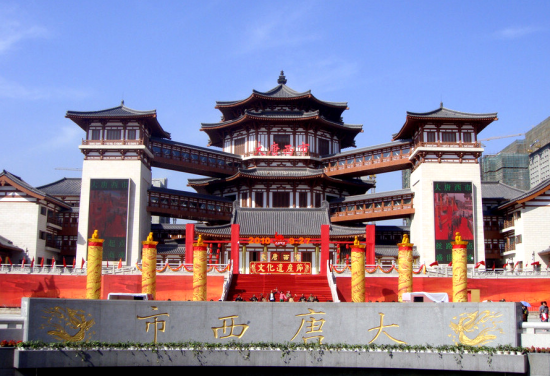 He was also one of the few emperors that promoted commercial development. During his reign, the new cities emerged everywhere. Half of the trading cities were located within Tang soil. Besides the coastal towns like Jiaozhou, Guangzhou, Mingzhou, and Fuzhou, inland cities such as Hongzhou (today’s Nanchang of Jiangxi), Yangzhou, Yizhou (today’s Chengdu), Shazhou, and Liangzhou became populous as well. The capital city Chang’an (today’s Xian) and the foil capital Luoyang became the international metropolises. With Tang territory extending to Central Asia, the Silk Road was resumed. Foreign traders came to Chang’an for business, further booming the Tang economy.
He was also one of the few emperors that promoted commercial development. During his reign, the new cities emerged everywhere. Half of the trading cities were located within Tang soil. Besides the coastal towns like Jiaozhou, Guangzhou, Mingzhou, and Fuzhou, inland cities such as Hongzhou (today’s Nanchang of Jiangxi), Yangzhou, Yizhou (today’s Chengdu), Shazhou, and Liangzhou became populous as well. The capital city Chang’an (today’s Xian) and the foil capital Luoyang became the international metropolises. With Tang territory extending to Central Asia, the Silk Road was resumed. Foreign traders came to Chang’an for business, further booming the Tang economy.
Military Expansion
In 628, Liang Luoren, an independent power, occupied northern Shaanxi and southern Inner Mongolia, killed his chief, and surrendered to Li Shimin. By now, the whole country was unified. In 630, Li Shimin sent general Li Jing to the northwest frontier to conquer the eastern Turks. The expedition was victorious, and Li Shimin was revered as the Great Khan by north tribes.
In 639, the King of Gaochang Qu Wentai defied Taizong's authority, fueling Taizong to send troops to conquer the Tarim. Later, Taizong set the Protectorate of the Western Regions in Gaochang city. The countries in western regions paid their attributes to the Tang court.
From 645 - 648, the Tang army engaged the war with Goguryeo and gained many spoils. Tang dynasty controlled today’s Liaoning and Korean peninsula.
In 645, Tang troops defeated the Syr-tardouch army and controlled today’s Inner Mongolia area.
By 646, the Tang dynasty had a large territory south to the Ha Tinh of Vietnam, north to Angara River, west to Bukhara of Uzbekistan, and east to Tonghua of Jilin province.
In 630, Li Shimin sent general Li Jing to the northwest frontier to conquer the eastern Turks. The expedition was victorious, and Li Shimin was revered as the Great Khan by north tribes.
In 639, the King of Gaochang Qu Wentai defied Taizong's authority, fueling Taizong to send troops to conquer the Tarim. Later, Taizong set the Protectorate of the Western Regions in Gaochang city. The countries in western regions paid their attributes to the Tang court.
From 645 - 648, the Tang army engaged the war with Goguryeo and gained many spoils. Tang dynasty controlled today’s Liaoning and Korean peninsula.
In 645, Tang troops defeated the Syr-tardouch army and controlled today’s Inner Mongolia area.
By 646, the Tang dynasty had a large territory south to the Ha Tinh of Vietnam, north to Angara River, west to Bukhara of Uzbekistan, and east to Tonghua of Jilin province.
Cultural Achievements
Li Shimin ordered people to collect books and stored them in the Hongwen House. He also appointed many scholars to compile and collate these books. As a result, the quality and quantity of the books during Taizong’s reign exceeded previous dynasties. Taizong himself was a poet. He had two books written, Di Fan (the Code of An Emperor) and Zhenguan Zhengyao (The Emperor's Government Strategy).
Ethnic Policies
When the Tang dynasty was founded, it was under constant threats by neighboring powers. A few years after Taizong’s reign, the Tang dynasty became powerful, and the military strategy shifted from defense to counterstrike. However, Taizong took the policy of mollification. 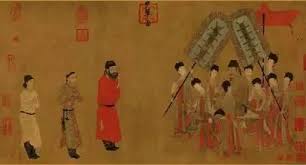 In 630, when the Eastern Turkistan Khanate was defeated, Taizong abandoned the usual policy of dismembering the country. Instead, he respected and maintained the old social structure and customs, and sent officials to govern them.
In 647, Taizong was revered as the Great Khan by the minority groups, and a special avenue was built for him.
Taizong also resumed the old tradition of making peace with neighbors by marriage. In 641, Taizong accepted the multiple requests from Songtsen Gampo and married Princess Wencheng to him. Since then, the relationship between the Tubo dynasty and the Tang dynasty became warm.
The open and friendly policy towards minorities significantly reduced the friction between the Tang dynasty and minority groups. It was in the Tang dynasty that Chinese people had a new name of Tang people, a proud appellation.
In 630, when the Eastern Turkistan Khanate was defeated, Taizong abandoned the usual policy of dismembering the country. Instead, he respected and maintained the old social structure and customs, and sent officials to govern them.
In 647, Taizong was revered as the Great Khan by the minority groups, and a special avenue was built for him.
Taizong also resumed the old tradition of making peace with neighbors by marriage. In 641, Taizong accepted the multiple requests from Songtsen Gampo and married Princess Wencheng to him. Since then, the relationship between the Tubo dynasty and the Tang dynasty became warm.
The open and friendly policy towards minorities significantly reduced the friction between the Tang dynasty and minority groups. It was in the Tang dynasty that Chinese people had a new name of Tang people, a proud appellation.
Diplomatic Achievements
During Taizong’s reign, the Tang dynasty accomplished a tremendous diplomatic triumph. It’s said that the neighboring countries, big or small, were all honored to form a relationship with the Tang dynasty. In 641, Tubo King Songtsen Gampo successfully met his Tang bride Wencheng, who brought the Tang civilization to Tibet Plateau. Siladitya of north India also heard about Taizong. He asked monk Xuan Zang a great deal about Taizong. Later, Siladitya sent ambassadors to the Tang court to form a friendly relationship.
Anecdotes about Taizong Li Shimin
Li Shimin and Wu Zetian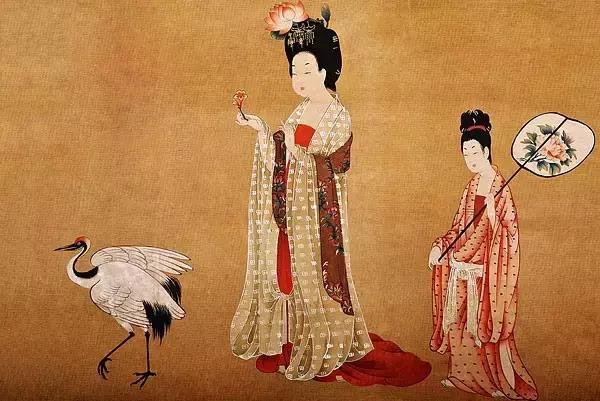
In 637, Li Shimin made Wu Zetian one of his concubines. There is no detailed description of Wu Zetian’s early court life with Li Shimin. There is only one story coming from Wu Zetian’s memoir about a horse taming. Li Shimin had a fierce horse, and no one could manage to tame it. Wu Zetian told Li Shimin that she could tame him, but she would need three things, an iron whip, an iron club, and a stagger. She said that she would whip the horse if he doesn’t yield, knock his head with the iron club if he resists the whip, and stab him in the throat if he continues to defy the knock. Li Shimin was impressed by Wu Zetian’s courage, but he didn’t favor her much. It turns out that Li Shimin preferred meek and tender women. Therefore, Wu Zetian didn’t get much favor from Li Shimin despite her intelligence and ambition, let alone elevation.
Taizong and Wei Zheng
Wei Zheng is one of the most famous counselors during Taizong’s reign. He was honest, blunt, wise, and unafraid of telling the truth to the emperor. Wei Zheng used to be a minister under the former crown prince Li Jiancheng. After the Xuanwu Gate Incident, Wei Zheng was escorted to meet Li Shimin, who blamed him for helping Li Jiancheng commit murder. Other officials were terrified by the Li Shimin’s rage, but Wei Zheng wasn’t. He replied firmly that the incident wouldn’t have happened if only Li Jiancheng listened to his words. Li Shimin was moved and decided to pardon him.  Later, Li Shimin appointed Wei Zheng, one of his private counselors, and later made him the prime minister. Wei Zheng didn’t let Li Shimin down. He spoke honestly about Li Shimin’s policies, administrations, and decisions. There were about 200 pieces of advice Wei Zheng offered, and Li Shimin gave them great considerations.
Wei Zheng was righteous all through his life; he even dared to enrage Taizong for truth. Sometimes, Taizong even revered him. There was a time that Taizong wanted to hunt in the forest, and he had everything prepared. However, he was not able to set off. Later, Wei Zheng asked why and Taizong answered that he did have the idea of hunting that day, but he was afraid that Wei Zheng would advise him not to. Therefore, he forfeited the idea. There is another interesting story. Taizong received a sparrow hawk, and he liked it very much. One day, when Taizong was playing with the bird, and he saw Wei Zheng coming his way. In a panic, Taizong hid the bird in his gown. Wei Zheng was aware of the bird, but he deliberately prolonged his report. As a result, the sparrow hawk was smothered to death.
Later, Li Shimin appointed Wei Zheng, one of his private counselors, and later made him the prime minister. Wei Zheng didn’t let Li Shimin down. He spoke honestly about Li Shimin’s policies, administrations, and decisions. There were about 200 pieces of advice Wei Zheng offered, and Li Shimin gave them great considerations.
Wei Zheng was righteous all through his life; he even dared to enrage Taizong for truth. Sometimes, Taizong even revered him. There was a time that Taizong wanted to hunt in the forest, and he had everything prepared. However, he was not able to set off. Later, Wei Zheng asked why and Taizong answered that he did have the idea of hunting that day, but he was afraid that Wei Zheng would advise him not to. Therefore, he forfeited the idea. There is another interesting story. Taizong received a sparrow hawk, and he liked it very much. One day, when Taizong was playing with the bird, and he saw Wei Zheng coming his way. In a panic, Taizong hid the bird in his gown. Wei Zheng was aware of the bird, but he deliberately prolonged his report. As a result, the sparrow hawk was smothered to death.
Related Articles
Tang Dynasty - History, Emperors, Politics, Culture, and Economy
Wu Zetian - the First Female Emperor in Chinese History



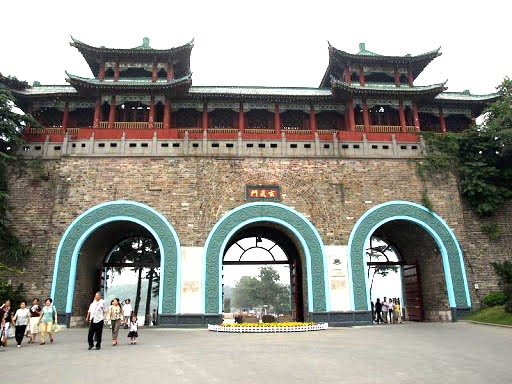

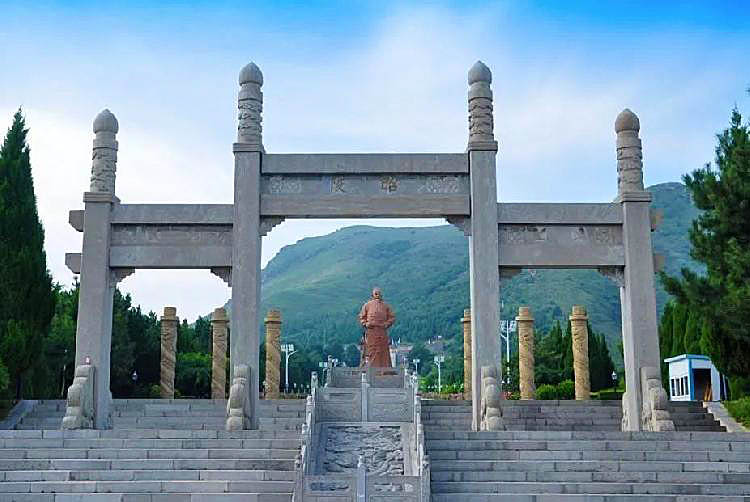
 background. He even forgave and elevated his former enemies. Therefore, Li Shimin was able to enlist a lot of talents like Fang Xuanling. Du Ruhui, Li Jing, Yuchi Gong, Qin Qiong, etc.. Besides, he also encouraged ordinary people to take the imperial examinations.
background. He even forgave and elevated his former enemies. Therefore, Li Shimin was able to enlist a lot of talents like Fang Xuanling. Du Ruhui, Li Jing, Yuchi Gong, Qin Qiong, etc.. Besides, he also encouraged ordinary people to take the imperial examinations. He was also one of the few emperors that promoted commercial development. During his reign, the new cities emerged everywhere. Half of the trading cities were located within Tang soil. Besides the coastal towns like Jiaozhou, Guangzhou, Mingzhou, and Fuzhou, inland cities such as Hongzhou (today’s Nanchang of Jiangxi), Yangzhou, Yizhou (today’s Chengdu), Shazhou, and Liangzhou became populous as well. The capital city Chang’an (today’s Xian) and the foil capital Luoyang became the international metropolises. With Tang territory extending to Central Asia, the Silk Road was resumed. Foreign traders came to Chang’an for business, further booming the Tang economy.
He was also one of the few emperors that promoted commercial development. During his reign, the new cities emerged everywhere. Half of the trading cities were located within Tang soil. Besides the coastal towns like Jiaozhou, Guangzhou, Mingzhou, and Fuzhou, inland cities such as Hongzhou (today’s Nanchang of Jiangxi), Yangzhou, Yizhou (today’s Chengdu), Shazhou, and Liangzhou became populous as well. The capital city Chang’an (today’s Xian) and the foil capital Luoyang became the international metropolises. With Tang territory extending to Central Asia, the Silk Road was resumed. Foreign traders came to Chang’an for business, further booming the Tang economy.
